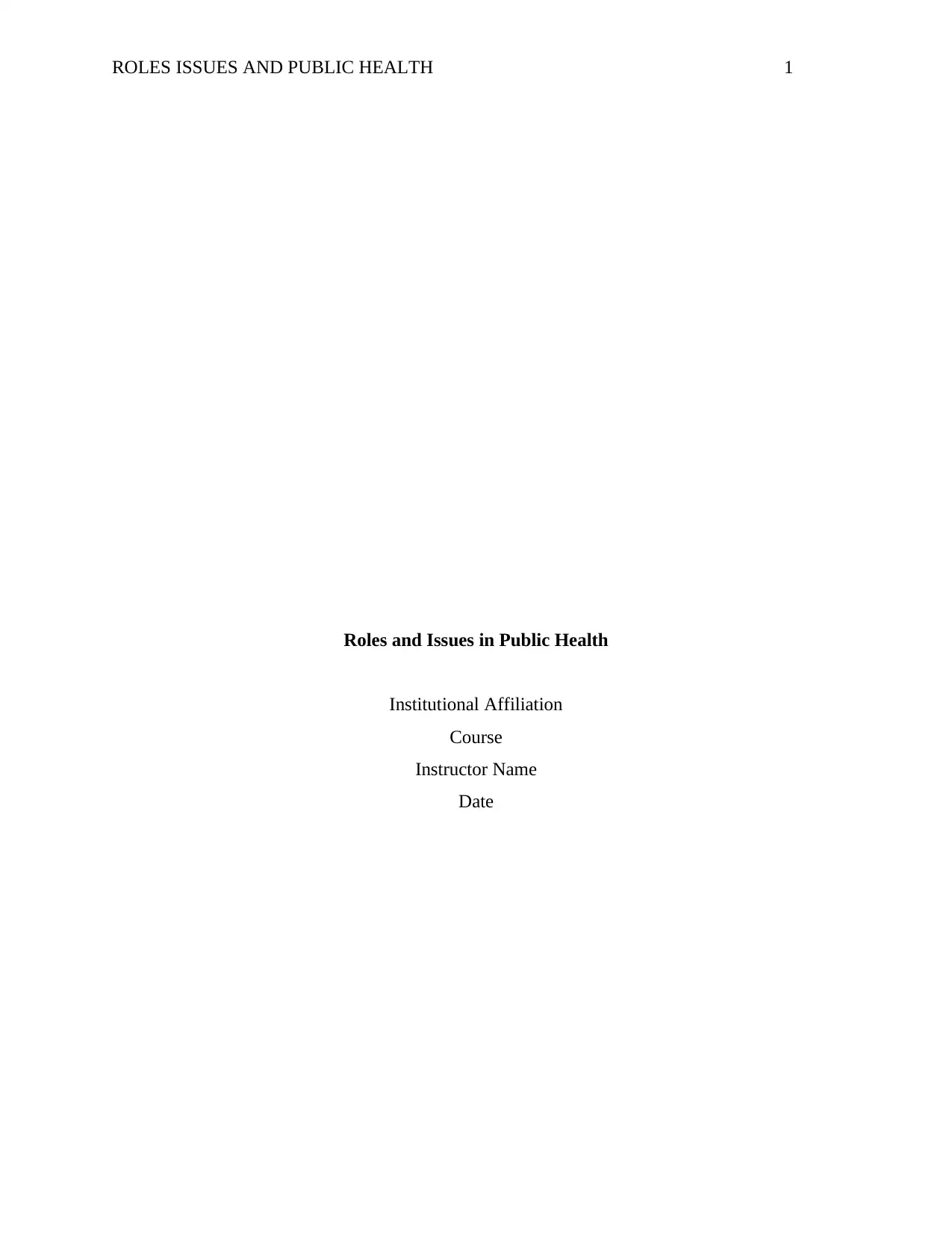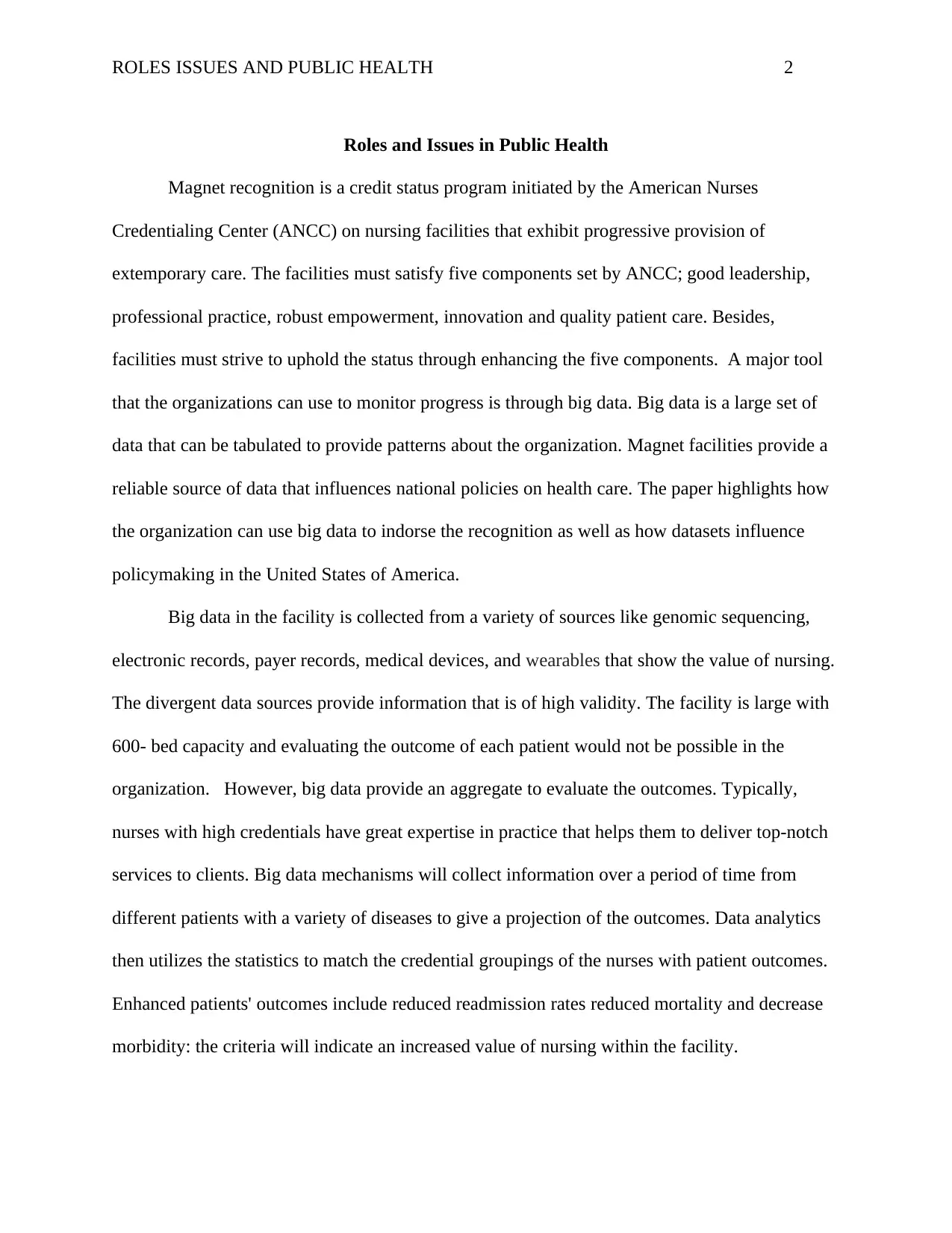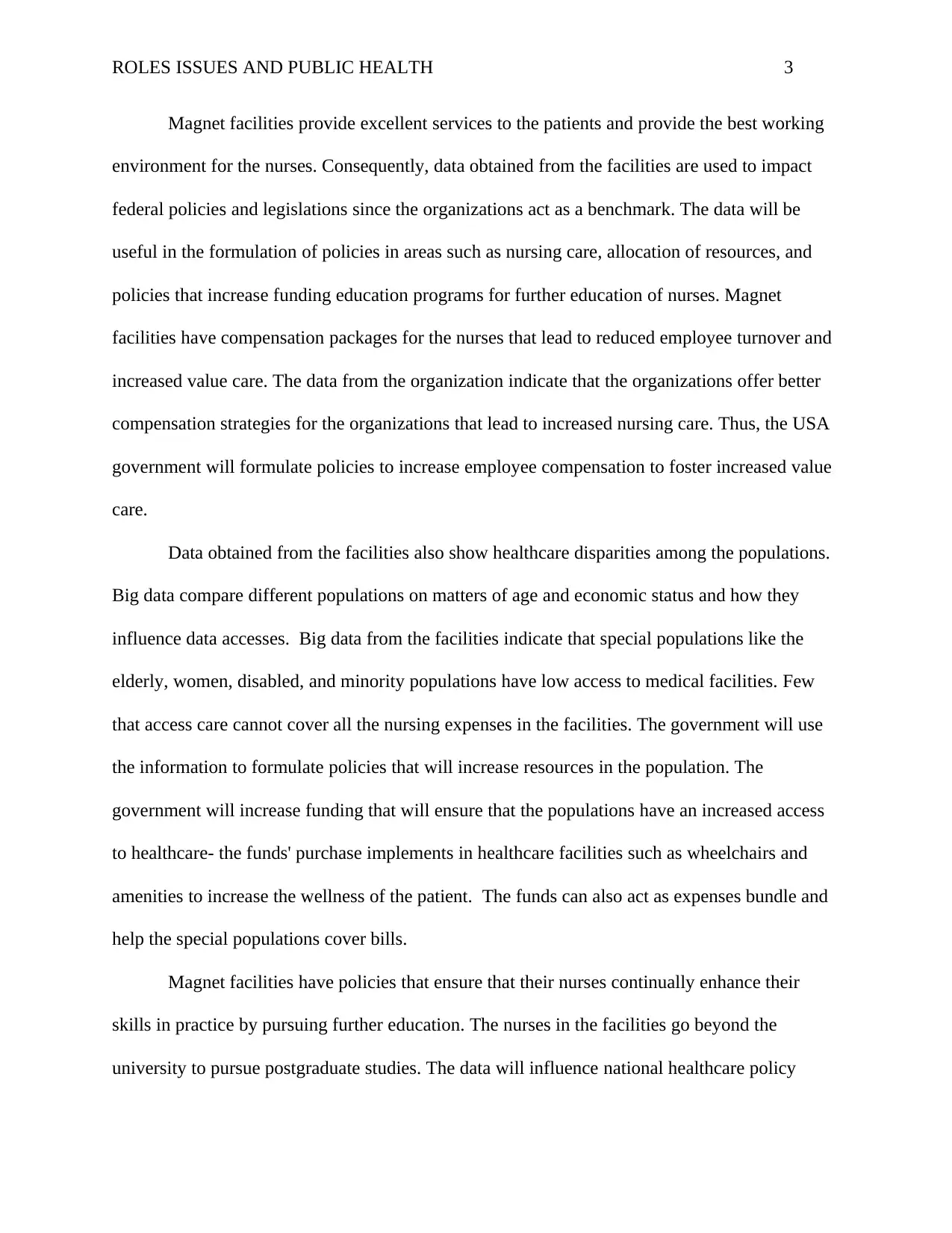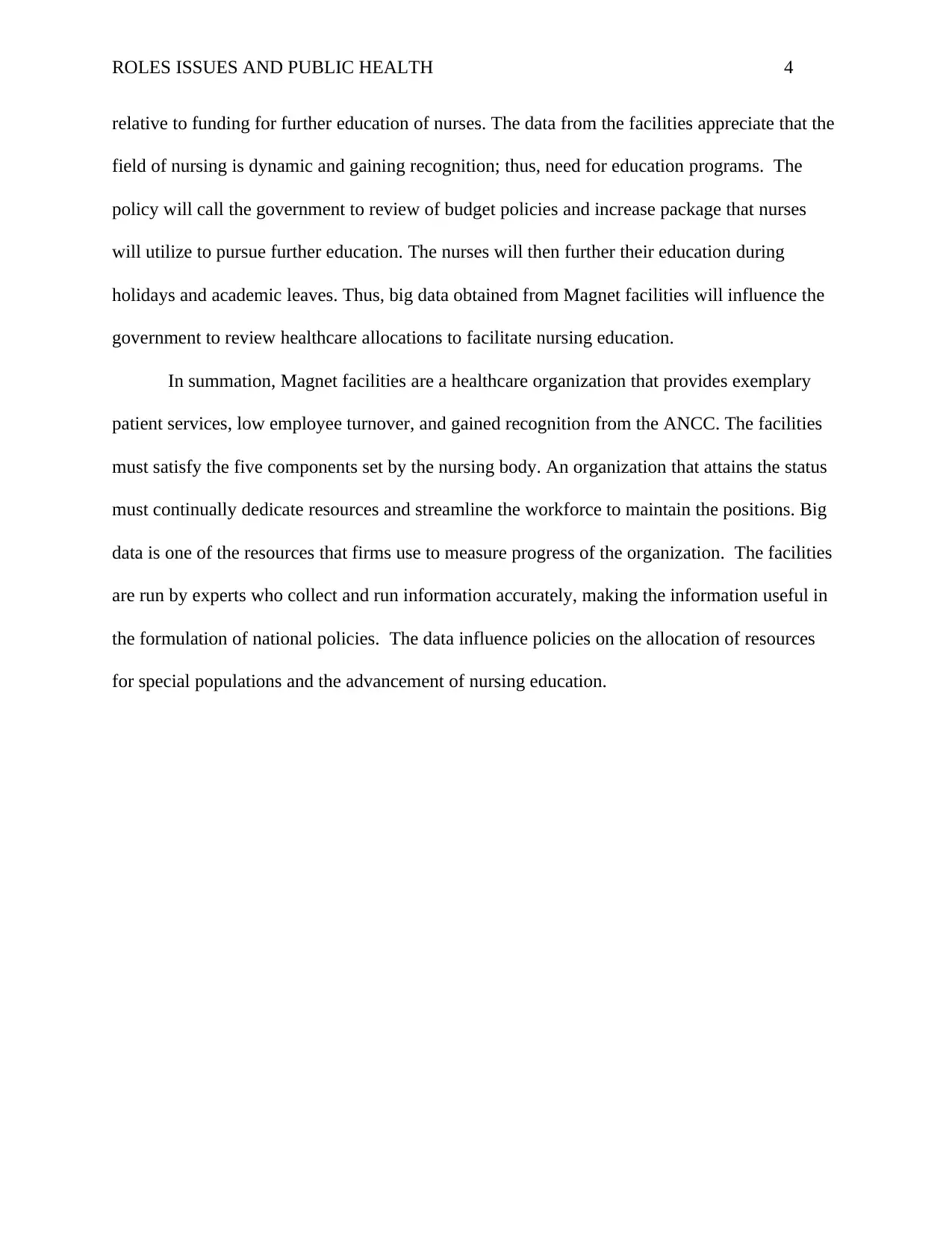Analyzing Big Data in Magnet Facilities and Policy Making
VerifiedAdded on 2022/08/01
|4
|868
|34
Case Study
AI Summary
This case study explores the application of big data within Magnet-recognized healthcare facilities, focusing on how aggregated data is utilized to demonstrate the value of nursing and influence national healthcare policies. The analysis highlights how data from various sources, such as electronic health records, can be used to correlate nurse credentials with patient outcomes, including reduced readmission rates and mortality. The study also examines how data from Magnet facilities impacts policy-making related to nursing care, resource allocation for specific populations, and funding for nursing education. The paper emphasizes the importance of big data in maintaining Magnet recognition and its role in shaping healthcare practices and policies across the United States. Furthermore, the case study discusses how data helps to address healthcare disparities among different populations and supports the continuous enhancement of nursing skills through further education.

ROLES ISSUES AND PUBLIC HEALTH 1
Roles and Issues in Public Health
Institutional Affiliation
Course
Instructor Name
Date
Roles and Issues in Public Health
Institutional Affiliation
Course
Instructor Name
Date
Paraphrase This Document
Need a fresh take? Get an instant paraphrase of this document with our AI Paraphraser

ROLES ISSUES AND PUBLIC HEALTH 2
Roles and Issues in Public Health
Magnet recognition is a credit status program initiated by the American Nurses
Credentialing Center (ANCC) on nursing facilities that exhibit progressive provision of
extemporary care. The facilities must satisfy five components set by ANCC; good leadership,
professional practice, robust empowerment, innovation and quality patient care. Besides,
facilities must strive to uphold the status through enhancing the five components. A major tool
that the organizations can use to monitor progress is through big data. Big data is a large set of
data that can be tabulated to provide patterns about the organization. Magnet facilities provide a
reliable source of data that influences national policies on health care. The paper highlights how
the organization can use big data to indorse the recognition as well as how datasets influence
policymaking in the United States of America.
Big data in the facility is collected from a variety of sources like genomic sequencing,
electronic records, payer records, medical devices, and wearables that show the value of nursing.
The divergent data sources provide information that is of high validity. The facility is large with
600- bed capacity and evaluating the outcome of each patient would not be possible in the
organization. However, big data provide an aggregate to evaluate the outcomes. Typically,
nurses with high credentials have great expertise in practice that helps them to deliver top-notch
services to clients. Big data mechanisms will collect information over a period of time from
different patients with a variety of diseases to give a projection of the outcomes. Data analytics
then utilizes the statistics to match the credential groupings of the nurses with patient outcomes.
Enhanced patients' outcomes include reduced readmission rates reduced mortality and decrease
morbidity: the criteria will indicate an increased value of nursing within the facility.
Roles and Issues in Public Health
Magnet recognition is a credit status program initiated by the American Nurses
Credentialing Center (ANCC) on nursing facilities that exhibit progressive provision of
extemporary care. The facilities must satisfy five components set by ANCC; good leadership,
professional practice, robust empowerment, innovation and quality patient care. Besides,
facilities must strive to uphold the status through enhancing the five components. A major tool
that the organizations can use to monitor progress is through big data. Big data is a large set of
data that can be tabulated to provide patterns about the organization. Magnet facilities provide a
reliable source of data that influences national policies on health care. The paper highlights how
the organization can use big data to indorse the recognition as well as how datasets influence
policymaking in the United States of America.
Big data in the facility is collected from a variety of sources like genomic sequencing,
electronic records, payer records, medical devices, and wearables that show the value of nursing.
The divergent data sources provide information that is of high validity. The facility is large with
600- bed capacity and evaluating the outcome of each patient would not be possible in the
organization. However, big data provide an aggregate to evaluate the outcomes. Typically,
nurses with high credentials have great expertise in practice that helps them to deliver top-notch
services to clients. Big data mechanisms will collect information over a period of time from
different patients with a variety of diseases to give a projection of the outcomes. Data analytics
then utilizes the statistics to match the credential groupings of the nurses with patient outcomes.
Enhanced patients' outcomes include reduced readmission rates reduced mortality and decrease
morbidity: the criteria will indicate an increased value of nursing within the facility.

ROLES ISSUES AND PUBLIC HEALTH 3
Magnet facilities provide excellent services to the patients and provide the best working
environment for the nurses. Consequently, data obtained from the facilities are used to impact
federal policies and legislations since the organizations act as a benchmark. The data will be
useful in the formulation of policies in areas such as nursing care, allocation of resources, and
policies that increase funding education programs for further education of nurses. Magnet
facilities have compensation packages for the nurses that lead to reduced employee turnover and
increased value care. The data from the organization indicate that the organizations offer better
compensation strategies for the organizations that lead to increased nursing care. Thus, the USA
government will formulate policies to increase employee compensation to foster increased value
care.
Data obtained from the facilities also show healthcare disparities among the populations.
Big data compare different populations on matters of age and economic status and how they
influence data accesses. Big data from the facilities indicate that special populations like the
elderly, women, disabled, and minority populations have low access to medical facilities. Few
that access care cannot cover all the nursing expenses in the facilities. The government will use
the information to formulate policies that will increase resources in the population. The
government will increase funding that will ensure that the populations have an increased access
to healthcare- the funds' purchase implements in healthcare facilities such as wheelchairs and
amenities to increase the wellness of the patient. The funds can also act as expenses bundle and
help the special populations cover bills.
Magnet facilities have policies that ensure that their nurses continually enhance their
skills in practice by pursuing further education. The nurses in the facilities go beyond the
university to pursue postgraduate studies. The data will influence national healthcare policy
Magnet facilities provide excellent services to the patients and provide the best working
environment for the nurses. Consequently, data obtained from the facilities are used to impact
federal policies and legislations since the organizations act as a benchmark. The data will be
useful in the formulation of policies in areas such as nursing care, allocation of resources, and
policies that increase funding education programs for further education of nurses. Magnet
facilities have compensation packages for the nurses that lead to reduced employee turnover and
increased value care. The data from the organization indicate that the organizations offer better
compensation strategies for the organizations that lead to increased nursing care. Thus, the USA
government will formulate policies to increase employee compensation to foster increased value
care.
Data obtained from the facilities also show healthcare disparities among the populations.
Big data compare different populations on matters of age and economic status and how they
influence data accesses. Big data from the facilities indicate that special populations like the
elderly, women, disabled, and minority populations have low access to medical facilities. Few
that access care cannot cover all the nursing expenses in the facilities. The government will use
the information to formulate policies that will increase resources in the population. The
government will increase funding that will ensure that the populations have an increased access
to healthcare- the funds' purchase implements in healthcare facilities such as wheelchairs and
amenities to increase the wellness of the patient. The funds can also act as expenses bundle and
help the special populations cover bills.
Magnet facilities have policies that ensure that their nurses continually enhance their
skills in practice by pursuing further education. The nurses in the facilities go beyond the
university to pursue postgraduate studies. The data will influence national healthcare policy
⊘ This is a preview!⊘
Do you want full access?
Subscribe today to unlock all pages.

Trusted by 1+ million students worldwide

ROLES ISSUES AND PUBLIC HEALTH 4
relative to funding for further education of nurses. The data from the facilities appreciate that the
field of nursing is dynamic and gaining recognition; thus, need for education programs. The
policy will call the government to review of budget policies and increase package that nurses
will utilize to pursue further education. The nurses will then further their education during
holidays and academic leaves. Thus, big data obtained from Magnet facilities will influence the
government to review healthcare allocations to facilitate nursing education.
In summation, Magnet facilities are a healthcare organization that provides exemplary
patient services, low employee turnover, and gained recognition from the ANCC. The facilities
must satisfy the five components set by the nursing body. An organization that attains the status
must continually dedicate resources and streamline the workforce to maintain the positions. Big
data is one of the resources that firms use to measure progress of the organization. The facilities
are run by experts who collect and run information accurately, making the information useful in
the formulation of national policies. The data influence policies on the allocation of resources
for special populations and the advancement of nursing education.
relative to funding for further education of nurses. The data from the facilities appreciate that the
field of nursing is dynamic and gaining recognition; thus, need for education programs. The
policy will call the government to review of budget policies and increase package that nurses
will utilize to pursue further education. The nurses will then further their education during
holidays and academic leaves. Thus, big data obtained from Magnet facilities will influence the
government to review healthcare allocations to facilitate nursing education.
In summation, Magnet facilities are a healthcare organization that provides exemplary
patient services, low employee turnover, and gained recognition from the ANCC. The facilities
must satisfy the five components set by the nursing body. An organization that attains the status
must continually dedicate resources and streamline the workforce to maintain the positions. Big
data is one of the resources that firms use to measure progress of the organization. The facilities
are run by experts who collect and run information accurately, making the information useful in
the formulation of national policies. The data influence policies on the allocation of resources
for special populations and the advancement of nursing education.
1 out of 4
Related Documents
Your All-in-One AI-Powered Toolkit for Academic Success.
+13062052269
info@desklib.com
Available 24*7 on WhatsApp / Email
![[object Object]](/_next/static/media/star-bottom.7253800d.svg)
Unlock your academic potential
Copyright © 2020–2025 A2Z Services. All Rights Reserved. Developed and managed by ZUCOL.





